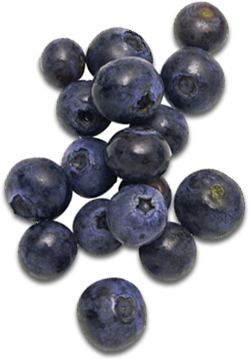no items to display
Falling for In-season Fruits and Vegetables
There’s nothing as disappointing than paying more than you should for produce, only to bring it home and find out it’s not very tasty. The most likely culprit? It’s out of season, has travelled a long way to get to you, and has ripened in a refrigerated truck instead of in a field or orchard. Having most fruits and vegetables available year-round is a mixed blessing. If we live in colder climates, it means we’re not forced to only eat canned food in February. However, it can also disconnect us from the seasons.
Here are four benefits of eating in-season fruits and vegetables:
1. More economical. Where are out-of-season fruits and vegetables grown? Far away from you, where they are in season! To make the long trip to you without rotting, this produce has to be picked before it’s ripe and then must travel many miles to find you. That’s why a basket of strawberries will cost you $3 in the summer, but may go up to $6 in the fall. Eat with the seasons, and save your money!
2. More flavorful. It’s a simple fact: fruits and vegetables grown outdoors with access to plenty of fresh air and sunshine, and that are allowed to ripen on the vine or tree, are decidedly more delicious than those raised in hot houses. The last phase of ripening is when the sugars are produced, so a tomato or a peach that is vine-ripened will be naturally sweeter than one picked before its prime.
3. More nutritious. Did you know that fruits and vegetables start losing their nutrient stores the moment they are picked? That means the longer picked produce sits around, the less nutritious it becomes. Because seasonal produce is grown near you, it gets to you more quickly, thereby preserving its nutritional value.
4. More eco-friendly. All that refrigeration and travel that out-of-season produce requires to make it to your local grocery store leaves a big environmental footprint. When you eat fruits and vegetables that are in-season, you’re doing the earth a favor.
September is a wonderful time to eat seasonally because a lot of your summer favorites are still going strong, while fall fruits and vegetables are just starting to make an appearance at your local farmers market. Any month you can get juicy peaches and crisp, sweet apples is a good month in my book.
Say Hello to Fall
Crunchy apples and mellow pears make great additions to any early fall meal. Stir these chopped fruits in oatmeal for breakfast; serve apple slices spread with your favorite nut butter or pears alongside a sharp cheese for a simple lunch; and top your dinner salad with diced apples or pears. Apples are also popular in desserts such as pies, tarts, and dumplings. While less common, pears make a nice dessert, too. Try sautéing pear slices in a skillet and drizzling them with honey. Or here’s an elegant pear tart!
Pumpkin is so strongly associated with fall that we see pumpkin spice in everything from coffee to breakfast cereal, sometimes starting even before Labor Day. But most of these products contain little, if any, actual pumpkin. Cooking with real pumpkin is a better way to celebrate fall. How does black bean, pumpkin, and corn stew sound? Give it a shot!
Many fall vegetables – such as broccoli, carrots, and greens like kale and spinach -- grow and travel well year ‘round, so they’re of good quality in every season. But they are even sweeter when picked during the cooler fall months. And in case you’re wondering, parsnips are in season for most of the fall and winter. This parsnip cheddar soup will warm you up when the colder months of fall have arrived.
What are your favorite fruits and vegetables to eat in fall? Share in the comments below!






